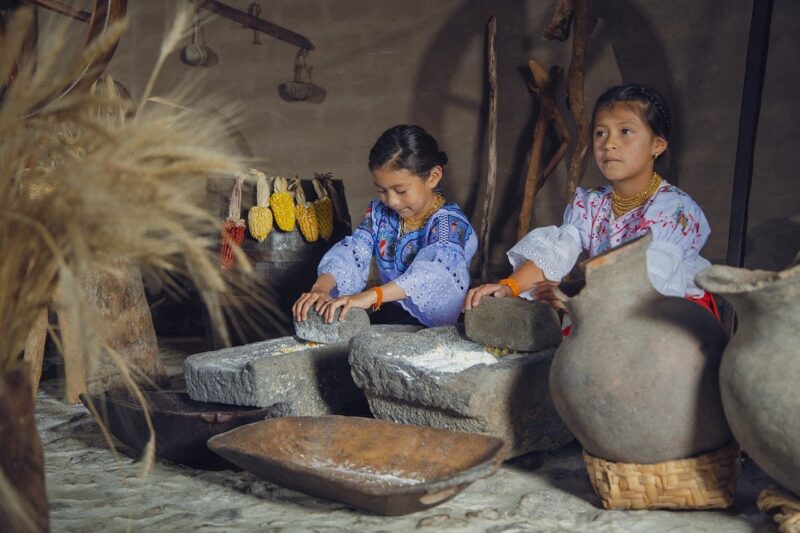Politics and Culture: The Interplay That Shapes Our Societies
November 18, 2024

Politics and culture are two distinct yet intertwined elements that shape societies worldwide. Each influences the other, creating a dynamic relationship that can drive change, perpetuate traditions, and alter perceptions. Understanding this intricate interplay is essential for comprehending the complexity of modern societies and the issues that arise within them.
1. Defining Politics and Culture
Politics refers to the processes, actions, and policies that govern a community or society. It involves power structures, decision-making, and the exercise of authority, often manifesting through governments, institutions, and social movements.
Culture, on the other hand, encompasses the beliefs, practices, values, and artifacts that characterize a group. It shapes identity, influences behaviors, and defines societal norms. Elements of culture include language, religion, art, customs, and more.
To understand their interplay, it’s crucial to recognize the distinct roles they play:
- Politics as an Influence on Culture: Political decisions can shape cultural norms, practices, and values. Legislation on education, freedom of speech, and human rights can affect cultural expressions and societal attitudes.
- Culture as an Influence on Politics: Cultural beliefs and values can drive political movements, influence voter behavior, and shape policy preferences. Cultural identity often dictates how individuals engage with and perceive their political environment.
2. Historical Perspectives: Politics and Culture Across Time
Throughout history, the relationship between politics and culture has evolved, reflecting the broader social context.
During the Renaissance, the fusion of political power and cultural advancements led to the flourishing of arts and sciences. Political patrons funded artists and thinkers, reflecting their status and shaping cultural developments. Conversely, the Enlightenment emphasized reason and individual rights, prompting shifts in political thought that would influence democratic movements.
In the 20th century, the rise of totalitarian regimes showcased a stark political influence over culture. Governments sought to control artistic expression and cultural narratives, quashing dissenting voices in favor of promoting state-approved ideologies. On the other hand, cultural movements, such as the counterculture of the 1960s, directly challenged political norms, advocating for civil rights, environmental awareness, and anti-war sentiments.
As societies continue to evolve, the dynamic interplay between politics and culture remains a central theme in contemporary discourse.
3. Case Studies: Examining the Interplay in Action
Several contemporary examples illustrate how politics and culture intersect, demonstrating their mutual influence:
- The Impact of Social Movements: Movements like Black Lives Matter and MeToo have not only highlighted cultural issues but also prompted political action. These movements influence policy changes around racial justice, gender equality, and social rights, showcasing how cultural sentiments can ignite political discourse.
- Globalization and Cultural Exchange: The global flow of ideas, values, and cultural products influences political landscapes around the world. As societies interact and share cultural practices, political ideologies may shift, leading to both challenges and opportunities for policy adaptation.
- Pop Culture and Political Campaigns: The rise of social media has transformed political campaigning, allowing cultural figures to influence public opinion. Candidates leverage pop culture to connect with younger audiences, exemplifying how cultural relevance can reshape political strategies.
4. Culture Wars: The Political Battle Over Cultural Identity
In contemporary societies, culture wars define the contentious political landscape. Debates over issues such as immigration, religion, race, and gender highlight the polarization of cultural values.
These culture wars often manifest in political campaigns that mobilize voters around cultural identities. Politicians may exploit cultural divisions to garner support or energize their base, resulting in legislation that reflects specific cultural ideologies.
The impact of these wars can be detrimental, fostering division and hostility within societies. Understanding this dynamic is crucial for finding common ground and promoting dialogue between divergent cultural groups.
5. The Future: Navigating the Politics-Culture Nexus
As societies confront global challenges—such as climate change, inequality, and technological disruption—understanding the interplay of politics and culture becomes increasingly vital. Individuals and leaders must foster a dialogue that respects diverse cultural perspectives while finding solutions to pressing political issues.
Educating citizens about the nuanced relationship between politics and culture can empower them to engage more thoughtfully in democratic processes, advocating for policies that reflect a richer understanding of societal complexities.
Conclusion
Politics and culture are inextricably linked, each influencing and reshaping the other. By exploring this interplay, we can better comprehend the forces that shape our societies, ultimately fostering greater dialogue, understanding, and collaboration. As we navigate the complexities of modern life, recognizing the interdependence of politics and culture serves as a reminder that societal change requires thoughtful engagement at all levels. By engaging with this interplay, we can forge a more inclusive future where diverse voices contribute to a richer political and cultural landscape.








